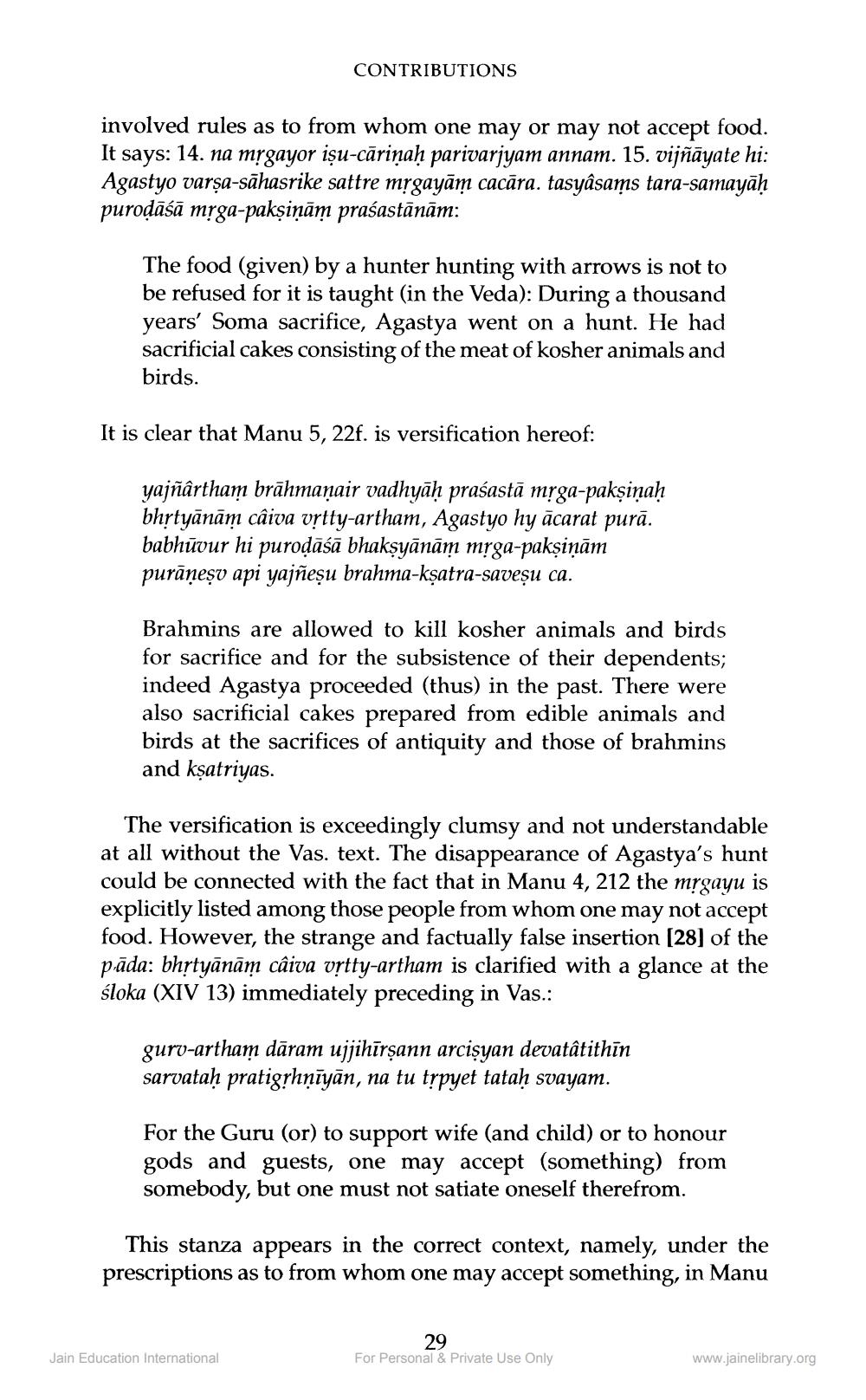________________
CONTRIBUTIONS
involved rules as to from whom one may or may not accept food. It says: 14. na mțgayor işu-cāriņaḥ parivarjyam annam. 15. vijñāyate hi: Agastyo varşa-sāhasrike sattre mțgayām cacāra. tasyâsams tara-samayāḥ purodāśā mrga-pakşiņām prasastānām:
The food (given) by a hunter hunting with arrows is not to be refused for it is taught in the Veda): During a thousand years' Soma sacrifice, Agastya went on a hunt. He had sacrificial cakes consisting of the meat of kosher animals and birds.
It is clear that Manu 5, 22f. is versification hereof:
yajñârtham brāhmaṇair vadhyāḥ prasastā mụga-pakṣiṇaḥ bhrtyānām câiva vrtty-artham, Agastyo hy ācarat purā. babhūvur hi purodāśā bhakşyānām mrga-pakşiņām purāņeşv api yajñeșu brahma-kșatra-saveșu ca.
Brahmins are allowed to kill kosher animals and birds for sacrifice and for the subsistence of their dependents; indeed Agastya proceeded (thus) in the past. There were also sacrificial cakes prepared from edible animals and birds at the sacrifices of antiquity and those of brahmins and kşatriyas.
The versification is exceedingly clumsy and not understandable at all without the Vas. text. The disappearance of Agastya's hunt could be connected with the fact that in Manu 4, 212 the mrgayu is explicitly listed among those people from whom one may not accept food. However, the strange and factually false insertion (28] of the pāda: bhrtyānām câiva vrtty-artham is clarified with a glance at the śloka (XIV 13) immediately preceding in Vas.:
gurv-artham dāram ujjihīrṣann arcişyan devatâtithin sarvataḥ pratigrhṇīyān, na tu trpyet tataḥ svayam.
For the Guru (or) to support wife (and child) or to honour gods and guests, one may accept (something) from somebody, but one must not satiate oneself therefrom.
This stanza appears in the correct context, namely, under the prescriptions as to from whom one may accept something, in Manu
29
Jain Education International
For Personal & Private Use Only
www.jainelibrary.org




